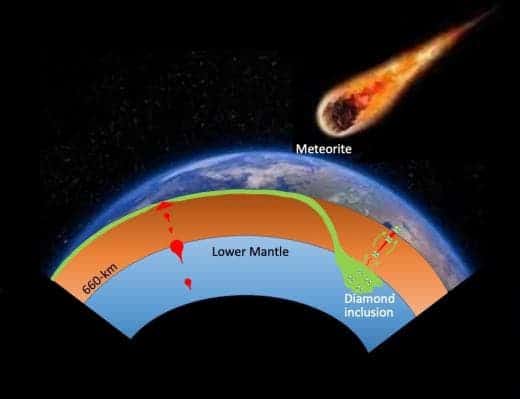
The most prized diamonds aren’t the largest, rather the purest. But one man’s trash is another man’s treasure. An impurity inside an inconspicuous diamond unearthed from an African mine in the 1980s turned out to be a new type of mineral previously unknown to science. This isn’t just any kind of mineral, either. It’s the only mineral formed in the planet’s lower mantle that we’ve ever found, and could thus greatly improve our understanding of Earth’s interior and how it formed.
The mineral in question, christened davemaoite after pioneering geophysicist Ho-kwang “Dave” Mao who studied how materials react to extreme pressure, was found in dark inclusions inside a diamond mined from Botswana. In 1987 it was sold by a gem dealer and changed hands until it reached the trained eye of geologists at the University of Nevada, Las Vegas.
“For jewelers and buyers, the size, color, and clarity of a diamond all matter. Inclusions — those black specks that annoy the jeweler — for us, they’re a gift,” said mineralogist Oliver Tschauner of the University of Nevada, Las Vegas. “I think we were very surprised. We didn’t expect this.”
The calcium silicate compound was surprising because we should never have been supposed to find it. The mineral formed hundreds of miles beneath Earth’s surface, inside the lower mantle between the core and the crust where temperature and pressure are ungodly high. Davemaoite’s structure is supposed to collapse outside the high-pressure environment of the mantle but since it was trapped in a diamond, the toughest material known to man, the mineral survived.
So what looked like a dark blemish turned out to be one of the rarest finds a geologist can ever hope to discover. And since davemaoite can host uranium and thorium, radioactive elements that are responsible for heating up Earth’s lower mantle, scientists believe that the newly discovered mineral can help answer some questions about Earth’s interior, with wide ramifications. For instance, the movements inside the planet’s lowest layers is believed to at least partially drive plate tectonics.
Davemaoite is only the second high-pressure mantle silicate ever seen on Earth’s surface. The other, named after Nobel laureate Percy Bridgman, was found inside a meteorite.
“The two form an exclusive club as the only lower-mantle silicate minerals confirmed in nature,” said co-author Yingwei Fei of Carnegie Science.

Now that scientists know what’s possible, they’ll be on the lookout for other lower mantle minerals that could have existed under our noses for all this time.
“The discovery of davemaoite inspires hope for finding other difficult high-pressure mineral phases in nature,” Fei said. “Being able to obtain more direct samples from the inaccessible lower mantle would fill in our knowledge gap regarding the chemical composition and variability of our planet’s depths.”
Davemaoite has been officially added by the International Mineralogical Association to its list of known minerals. The findings appeared in the journal Science.









